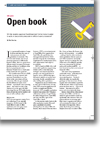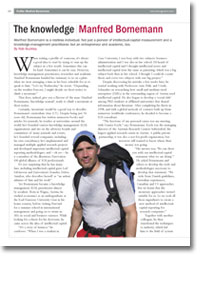
Open book
- Article 1 of 3
- IK Magazine, July 2006
Will the recently approved OpenDocument Format make it easier to work on documents produced on different word processors?
Page 1 | Page 2 | All 2 Pages
The issue becomes even less clear-cut with the latest version of Office, which deploys Microsoft’s new XML-based Office file formats, “Open XML”. These too have published definitions and have been entrusted to another standards body, the European Computer Manufacturers’ Association (ECMA); Microsoft has also submitted Open XML to ISO, although ISO is unlikely to approve a second XML document standard.
Gartner’s Knox also argues that closed file formats are no longer a good way to lock in users, particularly with the advent on online productivity applications, such as OfficeLive. “Standardised formats will make it easier to integrate Office data into other applications, and to build new products that use these formats. This is primarily in Microsoft’s self-interest – to avoid further user enmity. File compatibility is rapidly becoming an ineffective way to protect market share. Microsoft’s strategy is to embed Microsoft Office features and functionality into customers’ business processes by integrating desirable product ‘elements’ with other applications and applets. Microsoft does not need to control the file specification to achieve this, therefore changing the competitive landscape for office productivity suites.”
ODF’s chances of affecting the enterprise are quite small. With Microsoft owning 95% of the productivity suite market, according to Gartner, and that position unlikely to change over the next few years, Office documents will continue to be the standard in most organisations. Organisations making the switch away from Microsoft Office are more likely to use ODF, but exchange of documents with other organisations will require the use of intermediate formats, most likely PDF but more likely Office formats when editability is required. The adoption by organisations of Open XML for documents will slow adoption of ODF, since future-proofing will be far less of a concern. And online services will make file format far less important.
Perhaps the only real hope for serious adoption of ODF is a merger of the standard with Open XML. But whether such a merger would happen on Microsoft’s terms or on the ODF Alliance’s terms remains to be seen – the money is on Microsoft to win, as usual.
Page 1 | Page 2 | All 2 Pages

